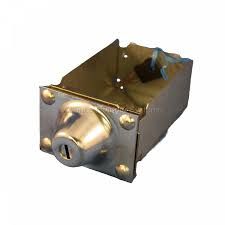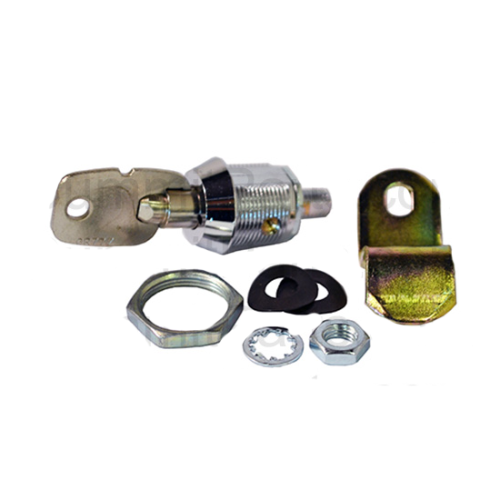The complete guide to troubleshooting your clothes dryer
What is a clothes dryer and how does it work?
The heat source for dryers is an electric heat element or a gas burner. In an electric dryer, electricity is passed over a coil that should produce resistance. The electron accumulation causes the metal coils to get extremely heated. A blower or fan circulates the heated air throughout the dryer by transferring it to the surrounding air.
The element or burner in the dryer heats the air after drawing it in at room temperature. Heat quickens the drying process, enabling garments to dry much more quickly than by air. For optimum performance, all Dryer Parts must be functional.
Common dryer issues and solutions:
The dryer isn't heating:
- Check the supply line valve if you have a gas dryer and you are experiencing heating problems. If it is shut, open the valve because it needs to be fully open to work.
- If you are facing this issue in electric dryers, two regular household fuses or circuit breakers are required. The drum can still turn if only one fuse blows, but there won't be any heat. Replaced circuit breakers or fuses may be required.
- The dryer won't heat if the thermal fuse has blown because of a power surge or another mechanical issue.
- It is simple and affordable to replace these fuses. You can locate replacement components at online merchants if you can discover your user or repair manual. Or just go to the HnKParts search box, then search for a fuse for the dryer.
The dryer isn't starting:
- The door latch may be broken. To ensure that the door closes securely, inspect the latch for lint and thoroughly clean it.
- After the lint is taken out, wipe the metal contact surfaces with a cotton swab and a little rubbing alcohol.
- Examine the circuit breakers and fuses in the power supply. Use a time-delay fuse whenever you replace a fuse.
- Verify the internal thermal fuse of the dryer. If it blows, the dryer won't turn on.
- A push start knob could not be properly engaging if you have one. Clean the area behind the knob, getting rid of any debris and lint.
Clothes take a long time to dry:
- When a dryer takes longer than usual to dry clothes, the lint filter is likely unclean. De-clutter the lint filter.
- The airflow required for speedy drying is decreased by a filter that is clogged with lint.
- Clean the exterior exhaust vent as well. Moisture gets trapped inside the dryer drum if the exterior vent does not open and close properly.
- The dryer should be run for five to ten minutes.
- To verify airflow, step outside and place your hand beneath the outside exhaust hood. If there is no airflow from the vent, it is likely clogged with lint and needs to be completely cleaned.
- Clear the vent of any snow or leaves that may obstruct it. Ensure the dryer exhaust duct is clean as well.
- Examine the exhaust pipe for the dryer. Make sure the connection is secure and free of kinks. Switch to a rigid system if you are currently using a flexible hose.
- Each load should be less. The clothing cannot tumble freely or get heat evenly in a crowded dryer.
- Make sure the dryer is in a space that is warmer than 45 degrees. Insufficient temperature prevents a dryer from operating effectively.
- Verify the dryer's surrounding airflow. If the dryer is housed in a closet, the door must have ventilation apertures at the top and bottom. Minimum airspace requirements for the dryer's front and back are one inch and five inches, respectively.
- Dryer sheets with fabric softener should not obstruct airflow to the lint trap or grill. Use only one sheet for each load.
A dryer is making a weird noise:
- It is usual to hear a clicking noise from a gas dryer. The gas valve is doing the opening and closing.
- The electrical dryer might not be level if you hear or feel a thudding noise. The dryer's legs may all be adjusted, and it needs to be leveled from front to rear and side to side.
- Look inside the dryer drum for any small objects that may be stuck. Coins, buttons, or paper clips may become stuck between the dryer's drum and the dryer's front or back.
- Examine the drum with a flashlight and take out any things. Before putting laundry in the washing or dryer, make sure all pockets are empty.
- The garments can be balled up or knotted if you hear the loud thumping. The dryer might not be correctly loaded. To finish the drying cycle, take out the knotted objects and give them a shake before reloading.
After an automatic timed cycle, the clothes are not dry:
- There may not be enough garments in the drum or the dryer may not be level, which could prevent the load from contacting the moisture sensor strips. Instead of using automatic dry for little loads, use scheduled dry.
- Moisture sensor strips should be cleaned. The dryer drum's front edge contains two metal strips that are often used as moisture sensors. They won't function correctly if they are covered in fabric softener sheet residue. Use rubbing alcohol and a cotton ball to clean them.
The dryer turns off after a brief time:
The thermostat, thermal resistor, or thermal fuse are the three components that are typically at fault when a dryer unexpectedly switches off after "functioning flawlessly." A voltage meter can test each of these components to see if they are operating correctly or if they must be changed.
How do I prevent common problems from occurring in the first place?
Most of the dryer problems can be solved by simply replacing damaged parts with new Dryer Replacement Parts. Problem-preventing actions are listed below.
- Wipe the inside of your dryer. It's recommended to wash the interior of your dryer once a month, even if there are no spots or residue within. Unplug the device before cleaning the drum with a microfiber cloth dampened with rubbing alcohol or a cloth soaked in warm, soapy water.
- The lint screen should be cleaned before or after each load. Your dryer's screen should be removed with care, cleaned with a used fabric softener sheet, and the lint removed.
- Clear the space around the lint screen. A dryer lint brush should clean the lint screen's housing cavity after removing it. For this job, you can also use the vacuum cleaner's crevice attachment.
- Make sure your dryer is balanced. The rotating parts of your dryer will wear out more quickly if it is not level. If the dryer shakes or moves while it is operating, adjust the bottom feet.
- Vacuum the area beneath and behind the dryer. Three times a year, clean the area around the dryer.
- Examine and purge the venting system. If your dryer performance is declining, hire experts to clean your ducts and vent. In some emergencies, you need to search for Dryer Parts Near You to replace damaged dryer components. This can be required as frequently as twice a year if you have pets or a big household. If required, replace the vent hose.
- Look at the exhaust outside. Although air should flow via the vent, occasionally debris gets in the way.
HnK Parts is a leading supplier of appliance parts and supplies. From now on, there is no need to search for dryer parts near me. Because we have doorstep delivery with same-day shipping.









